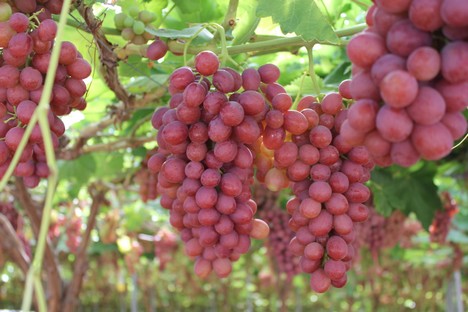The table grape campaign started a couple of weeks ago in the early areas of the coast of the Region of Murcia, in municipalities such as Águilas and Mazarrón. The start has come about a week late compared to last season, and so far, the harvest is developing slowly. More significant volumes will start to be delivered to the markets next week, as the harvest kicks off in more areas.

According to APOEXPA, the Association of Exporting Producers of Fruit, Table Grapes and Other Agricultural Products, harvest volumes will be lower this year for the early varieties, while the supply of mid-season varieties, available from August, will be greater.
“A significant share of the early grapes corresponds to older varieties, which are not usually protected with plastic and are, therefore, more exposed to inclement weather. The newer and leading varieties are mostly covered and that is why there is an imbalance in the supply between the early season and the mid and late seasons,” says the president of Apoexpa, Joaquín Gómez.
The markets are already starting to look towards Spain, as the supply from Egypt is falling and Morocco, which doesn’t generally have a lot of table grapes, has already finished. “Egypt started earlier this year, so it is expected to finish earlier, as well, so their production will not clash as much with ours. However, there are many problems with container logistics and long delays in the arrivals, which makes it more difficult to forecast the volumes of Egyptian grapes that will be entering the markets,” says Joaquín Gómez.
In the 2020 season, the Region of Murcia produced around 230,000 tons of table grapes and exported approximately 170,000 tons. “In order to meet our prospects, it will be key that the weather conditions remain stable in the months of September and October, since the late varieties are the ones exported the most,” he says.
“The acreage planted with table grapes in the Region of Murcia remains stable, although older varieties continue to be replaced with newer ones that are more productive and successful among consumers. In previous years, there were a lot of Superior white grapes and now only approximately 25% of them remain, replaced by more innovative varieties. The same is happening with the red Crimson variety,” says Joaquín Gómez.
The president of APOEXPA highlighted the growth of sales in the domestic market, with around 35,000 tons marketed last year. “Grape consumption has increased considerably in Spain thanks to the introduction of seedless varieties. In fact, we are seeing more and more space devoted to table grapes on the shelves of large supermarket chains. We expect this trend to continue this year as well.”
As for exports, the representative of this association mentions the great prospects for France within the EU, but also that it will be difficult for long distance shipments to increase.
“The growth of exports to France was truly exponential last season. Until two years ago, the demand for seedless table grapes didn’t seem to be taking off at all, but trends have changed in an impressive manner. Regarding long-distance shipments, we are confident that we will continue to export good quantities to countries such as South Africa and, to a lesser extent, to markets that opened up only two years ago, such as China and Vietnam. We have to take into account the major delays (of up to 10 days) in ship arrivals since the pandemic started, which are not allowing us to be as efficient as we would like to be. Therefore, we do not foresee much growth in these markets.”
 For more information:
For more information:
Joaquín Gómez
APOEXPA
M: +34 680334648
jgomezapoexpa@hotmail.com
www.apoexpa.es


